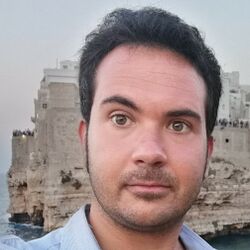B2.6 X-Band Plasma-Based Reflective Surface
Symposium: B2. IAF SPACE COMMUNICATIONS AND NAVIGATION SYMPOSIUM
Session: 6. Advances in Space-based Communication Technologies, Part 2
Day: Friday 06.10.2023
Time: 10:15
Room: BCC B2
Recently, plasma-based reflective surfaces have been proposed to control the reflection of an incident electromagnetic (EM) wave in terms of beam-steering and polarization. A plasma-based reflective surface consist on a series of plasma discharges placed on top of a ground plane in which the phase front of the reflected wave (i.e., its direction) can be reconfigured varying plasma parameters. Specifically, the plasma density can be controlled varying the electrical power spent to sustain each discharge. Moreover, if a magnetic field is added, also the polarization of the reflected wave can be fully controlled (e.g., conversion from linear to circular).
Plasma-based reflective surfaces are an appealing technology for SatCom and radio navigation. Indeed, operations of beam-forming and beam-steering can be accomplished electronically without relying on mechanical moving parts or complex phasing systems. This feature can be exploited in broadcast satellites if multi-beam antennas are required to widen the coverage area maintaining high signal levels. The possibility to control the polarization is also appealing if signals are transmitted relying on circular polarization (e.g., in the field of radio navigation). Indeed the design of the antennas that generate the signal could be eased with respect to the state of the art (e.g., horn antennas instead of helix). Finally, once the plasma is turned “off”, the interference produced by plasma-based reflective surfaces on other antennas in the nearby is drastically reduced provided that the main conductive medium (i.e., plasma) fades. This is very useful in satellite applications where several antennas are usually stacked together because of the strict volume constrains.
In this work we present the design of a plasma-based reflective surface operated in X band. A combined numerical-experimental approach will be adopted. Numerical simulations of both the plasma dynamics within the discharges and the EM response of the reflective surface will be accomplished with the software OpenFoam and CST Studio Suite, respectively. Plasma discharges will be realized and tested to be used as benchmark for the numerical solvers both in terms of plasma parameters and EM response. Thus, the design presented in this work will be a first step toward the development of a plasma-based reflective surface for space application.

